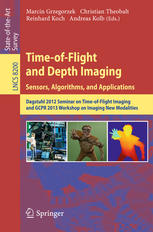

Most ebook files are in PDF format, so you can easily read them using various software such as Foxit Reader or directly on the Google Chrome browser.
Some ebook files are released by publishers in other formats such as .awz, .mobi, .epub, .fb2, etc. You may need to install specific software to read these formats on mobile/PC, such as Calibre.
Please read the tutorial at this link: https://ebookbell.com/faq
We offer FREE conversion to the popular formats you request; however, this may take some time. Therefore, right after payment, please email us, and we will try to provide the service as quickly as possible.
For some exceptional file formats or broken links (if any), please refrain from opening any disputes. Instead, email us first, and we will try to assist within a maximum of 6 hours.
EbookBell Team

0.0
0 reviewsCameras for 3D depth imaging, using either time-of-flight (ToF) or structured light sensors, have received a lot of attention recently and have been improved considerably over the last few years. The present techniques make full-range 3D data available at video frame rates, and thus pave the way for a much broader application of 3D vision systems.
A series of workshops have closely followed the developments within ToF imaging over the years. Today, depth imaging workshops can be found at every major computer vision conference. The papers presented in this volume stem from a seminar on Time-of-Flight Imaging held at Schloss Dagstuhl in October 2012. They cover all aspects of ToF depth imaging, from sensors and basic foundations, to algorithms for low level processing, to important applications that exploit depth imaging. In addition, this book contains the proceedings of a workshop on Imaging New Modalities, which was held at the German Conference on Pattern Recognition in Saarbrücken, Germany, in September 2013. A state-of-the-art report on the Kinect sensor and its applications is followed by two reports on local and global ToF motion compensation and a novel depth capture system using a plenoptic multi-lens multi-focus camera sensor.